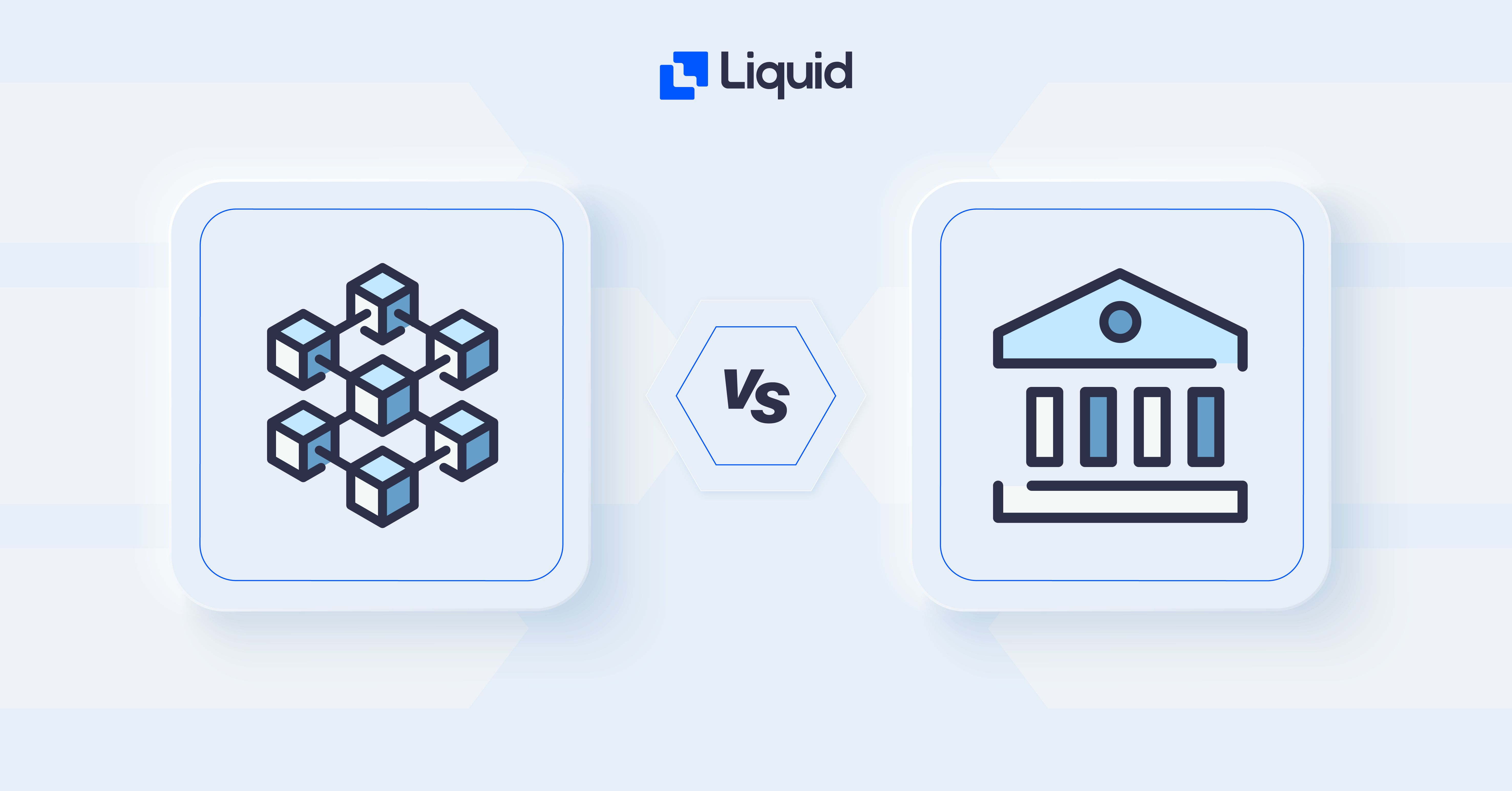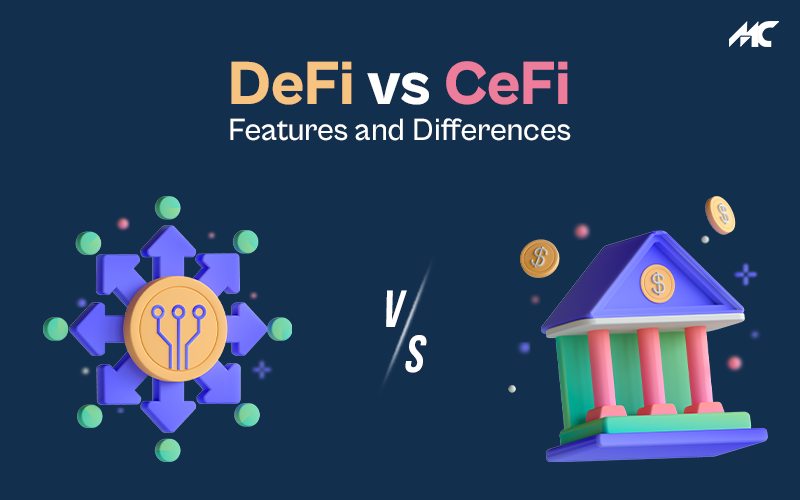When it comes to the world of cryptocurrency, there are two main types of systems that users can choose from: centralized finance (Cefi) and decentralized finance (Defi). These two systems differ significantly in terms of their features and functionality, and it’s important for investors to understand the differences before deciding which one to use.
Traditional banking systems are an example of centralized finance, where financial institutions have full control over customers’ transactions and funds. In Cefi, these institutions act as intermediaries and are in charge of verifying and approving transactions. They also have the authority to charge fees and set the terms and conditions of their services.
On the other hand, Defi operates on a decentralized network, where transactions take place directly between users without the need for intermediaries. Defi systems are built on blockchain technology, which ensures transparency and security. There is no central authority in charge, and users have full control over their funds and assets.
One of the key features of Defi is its permissionless nature. Unlike Cefi, which requires users to go through a verification process before accessing financial services, Defi allows anyone to participate without any restrictions. This open access encourages financial inclusion and allows users to take advantage of decentralized applications, lending and borrowing platforms, and liquidity pools.
Additionally, Defi provides users with more privacy and security. In Cefi systems, users need to submit personal information and go through know-your-customer (KYC) procedures. With Defi, transactions can be made anonymously and securely, making it harder for malicious actors to track and exploit user data.
Despite the advantages of Defi, it’s important to note that Cefi systems offer benefits as well. Cefi platforms are typically more regulated and compliant with anti-money laundering (AML) and know-your-customer (KYC) regulations. They also often provide centralized customer support and insurance coverage, which adds an extra layer of trust for users.
In conclusion, the choice between Cefi and Defi depends on individual preferences and needs. Those seeking more control, privacy, and the ability to transact without traditional intermediaries may find Defi systems more appealing. However, for users who prioritize regulation, insurance protection, and centralized support, Cefi platforms may be a better fit.
Centralization – Main Features of CeFi
Centralized Finance (CeFi) refers to traditional financial systems that are regulated by financial institutions and are typically centralized in nature. In CeFi, users have to submit their personal information and sign up for an account with a centralized exchange or financial institution to access their services.
In CeFi, the flow of financial transactions is limited to the systems and rules set by the centralized entity. Customers have to trust the centralized institution to properly handle their funds and ensure the security of their personal information.
Unlike decentralized finance (DeFi) where anyone can participate without permission, in CeFi, there are often restrictions on who can use the services and what they can do. For example, customers may need to pass certain identity verification measures or be limited to certain types of transactions.
One of the main features of CeFi is the centralized control and management of funds. The centralized entity is in charge of holding and managing the customers’ assets, similar to how traditional banking systems operate. This also means that there are typically more regulatory measures in place, such as anti-money laundering (AML) and know-your-customer (KYC) requirements.
Another feature of CeFi is the presence of other financial services typically offered by centralized institutions, such as insurance and securities trading. This allows customers to access a wider range of financial products and services in a centralized and regulated environment.
Here are a few examples of centralized institutions in the crypto space:
- Centralized cryptocurrency exchanges like Coinbase and Binance
- Traditional financial institutions offering cryptocurrency services, such as JPMorgan Chase
- Payment processors like PayPal and Square that provide cryptocurrency services to their customers
Overall, CeFi provides a more traditional and centralized approach to financial services, offering increased regulatory oversight and the ability to access a wider range of financial products. However, it also means that users have to trust the centralized institution and rely on their systems for security and proper handling of funds.
Permission – DeFi vs traditional financial services
One of the main differences between DeFi (Decentralized Finance) and traditional financial services is the concept of permission. In traditional financial services, such as banking or securities exchange, customers typically need to submit their personal information and sign various agreements to gain access to financial services. This permissioned system is regulated by centralized institutions to ensure compliance with anti-money laundering and other regulations.
In contrast, DeFi operates on a permissionless system, where anyone can participate and access the financial services offered by the DeFi protocols. There is no need to provide personal information or sign any agreements. DeFi transactions are conducted directly between users’ digital wallets, without the need for intermediaries.
How is this possible? DeFi harnesses the power of blockchain technology and smart contracts to create a distributed system where transactions can be verified and executed automatically. Instead of relying on a centralized authority, trust is placed in the decentralized infrastructure of the blockchain. This allows for a more inclusive and borderless financial system, where financial services are accessible to anyone with an internet connection.
Here are some examples of the differences in features between DeFi and traditional financial services:
- Centralization: DeFi is built on decentralized protocols that are not controlled by any single entity, while traditional financial services are typically centralized and operated by banks or other financial institutions.
- Trust: In DeFi, trust is placed in the underlying technology and system, whereas in traditional financial services, trust is placed in the institutions providing the services.
- Regulation: Traditional financial services are heavily regulated by government authorities, while DeFi currently operates in a limited regulatory environment.
- Accessibility: DeFi services can be accessed by anyone with an internet connection and a digital wallet, while traditional financial services may have limitations based on geographic location or other factors.
Overall, the permissionless nature of DeFi allows for a more open and inclusive financial system, where the flow of funds and access to services are not controlled by centralized institutions. However, it is important to note that DeFi is still an emerging sector and there are potential risks and challenges that need to be addressed, such as security and user protection.
Trust – How DeFi is Different From CeFi DeFi vs CeFi
Trust is a crucial component in the world of finance, whether it is in the traditional banking sector or the emerging world of cryptocurrency. However, the way trust is established and maintained varies between decentralized finance (DeFi) and centralized finance (CeFi).
Centralized Financial Institutions (CeFi): In the CeFi system, trust is placed in centralized organizations such as banks or exchanges. These institutions have established systems and regulations to ensure the security and legitimacy of financial transactions. Customers are required to trust these institutions to handle their funds securely, provide services, and comply with legal and regulatory requirements. However, this trust comes with limited control and transparency for the customers.
Decentralized Finance (DeFi): DeFi, on the other hand, aims to remove the need for trust in centralized institutions. DeFi systems operate on blockchain technology, which enables the distribution of data and transactions across multiple nodes, making it highly resistant to tampering and censorship. With DeFi, individuals have more control over their finances, as they can directly interact with smart contracts and access financial services using their own wallets. Trust is established through the immutability and transparency of the blockchain, which ensures that transactions are executed as programmed and can be verified by anyone.
One of the key differences between DeFi and CeFi is the permissionless nature of DeFi protocols. In DeFi, anyone can access and use the services and protocols without the need for approval or sign-ups. This open access allows for greater financial inclusion and democratization. On the other hand, CeFi usually requires users to go through a centralized sign-up process, providing personal information, and relying on the centralized authority to grant access to their services.
Furthermore, DeFi systems often offer a wider range of financial services compared to traditional centralized systems. For example, DeFi protocols can facilitate lending, borrowing, staking, yield farming, decentralized exchanges, and more, all within the same ecosystem. CeFi institutions, while regulated, often have more limited offerings and may charge high fees for certain services.
It’s important to note that both CeFi and DeFi have their own advantages and disadvantages. While CeFi provides more familiar and regulated structures, DeFi offers greater control, transparency, and potentially higher yields. Ultimately, the choice between the two depends on individual preferences and risk appetite.
CeFi Examples – What Is CeFi
In the world of finance, CeFi (Centralized Finance) refers to the traditional financial systems that are centralized and regulated. Unlike DeFi (Decentralized Finance), which operates on blockchain technology, CeFi examples include traditional banks, centralized exchanges, and other financial institutions.
1. Traditional Financial Systems
One of the main examples of CeFi is the traditional financial system, where anyone with a bank account can access various financial services. These traditional banks act as intermediaries and have centralized control over the flow of funds, akin to how a customer’s funds are managed in a centralized exchange.
2. Centralized Exchanges

Another example of CeFi is centralized exchanges. These platforms act as intermediaries between buyers and sellers of digital assets, where users must sign up and often go through a KYC (Know Your Customer) process. The centralized exchange holds the users’ funds in a centralized wallet and facilitates the transactions on their behalf.
3. Regulated Financial Institutions

Regulated financial institutions, such as insurance companies and investment firms, also fall under the category of CeFi. These institutions operate within the boundaries set by regulatory authorities to protect consumers and maintain the integrity of the financial system. They collect and manage funds on behalf of their customers, providing various financial services with centralized control.
In summary, CeFi examples include traditional banks, centralized exchanges, and other regulated financial institutions. These centralized systems have control over the flow of funds, require verification processes, and operate within regulatory frameworks. Unlike DeFi, CeFi lacks the features of decentralization and trust that come with blockchain technology. Customers rely on these centralized institutions to manage their funds and perform financial transactions.
FAQ:
What is the difference between DeFi and CeFi?
DeFi, or Decentralized Finance, is a system that allows individuals to access financial services without the need for intermediaries like banks or traditional financial institutions. It operates on blockchain and uses smart contracts to enable peer-to-peer transactions. On the other hand, CeFi, or Centralized Finance, relies on traditional financial institutions and intermediaries to offer financial services. It is more centralized and typically requires users to trust these intermediaries.
How does DeFi differ from CeFi in terms of trust?
In DeFi, trust is placed in the code and protocols that run on the blockchain. Transactions and financial activities are governed by these codes and are transparent to all participants. In CeFi, trust is placed on centralized intermediaries like banks or financial institutions, which can control and manipulate transactions or user funds. This makes CeFi more prone to risks and vulnerabilities.
Can you give some examples of CeFi?
Some examples of CeFi include traditional banks, investment firms, and centralized cryptocurrency exchanges like Coinbase or Binance. These platforms require users to create accounts, go through KYC (Know Your Customer) procedures, and trust the centralized entities with their funds and personal information.
How does CeFi differ from DeFi in terms of centralization?
CeFi is more centralized compared to DeFi. In CeFi, financial activities are controlled and governed by centralized entities like banks or financial institutions. These intermediaries have the power to approve or reject transactions, freeze accounts, or manipulate funds. DeFi, on the other hand, operates on a decentralized network, where transactions are verified and executed by a network of participants, eliminating the need for intermediaries.
What are the main features of CeFi?
The main features of CeFi include a centralized infrastructure, where financial activities are controlled by intermediaries, the requirement of user identification and KYC procedures, the ability to freeze or block user accounts, and the potential for manipulation or censorship by centralized entities. CeFi platforms also often offer customer support and insurance for funds deposited on their platforms.
How does permission differ between DeFi and CeFi?
In DeFi, permission is not required to access financial services. Anyone with an internet connection and a supported wallet can participate in DeFi protocols and perform transactions. On the other hand, CeFi platforms require users to create accounts, go through a registration process, and often comply with KYC procedures before they can access financial services or perform transactions.



As an investor in the crypto space, I have to say that DeFi is the way to go. The transparency and control over my funds are crucial to me, and that’s exactly what DeFi offers. With no intermediaries and full ownership of my assets, I feel much more secure and empowered in the DeFi ecosystem.
Defi is the future of finance! With its decentralized nature and transparency, it gives power back to the users. No more intermediaries taking fees and controlling our funds. I’m all in for Defi!
How does Defi ensure security without a central authority?
Hi Olivia7975, great question! Defi ensures security through the use of blockchain technology. Blockchain is a decentralized and transparent system that is designed to prevent fraud and tampering. It achieves this through a combination of cryptographic algorithms, consensus mechanisms, and smart contracts. By eliminating the need for a central authority, Defi provides users with direct control over their funds and assets, reducing the risk of unauthorized access or manipulation. Additionally, Defi platforms often undergo rigorous security audits and employ various security measures to protect users’ assets. I hope this helps you understand the security aspect of Defi!
I believe that Defi is the future of finance. It provides users with full control over their funds and eliminates the need for intermediaries. With its permissionless nature and transparency, Defi offers a trustworthy alternative to traditional banking systems.
Defi provides users with more autonomy and control over their financial transactions compared to Cefi. With Defi, users don’t have to rely on centralized authorities to verify and approve their transactions. Instead, they can directly interact with the decentralized network, ensuring transparency and reducing the risk of censorship. It’s exciting to see how blockchain technology is revolutionizing the financial industry, and Defi is definitely the way forward!
Defi is the future of finance! I love how it empowers users by giving them full control over their funds and removing the need for intermediaries. It’s a game-changer!
Defi is the future! I love the idea of decentralized finance where we have control over our funds and no intermediaries to charge fees. It’s all about transparency and security. Plus, who needs permission? Count me in for Defi!